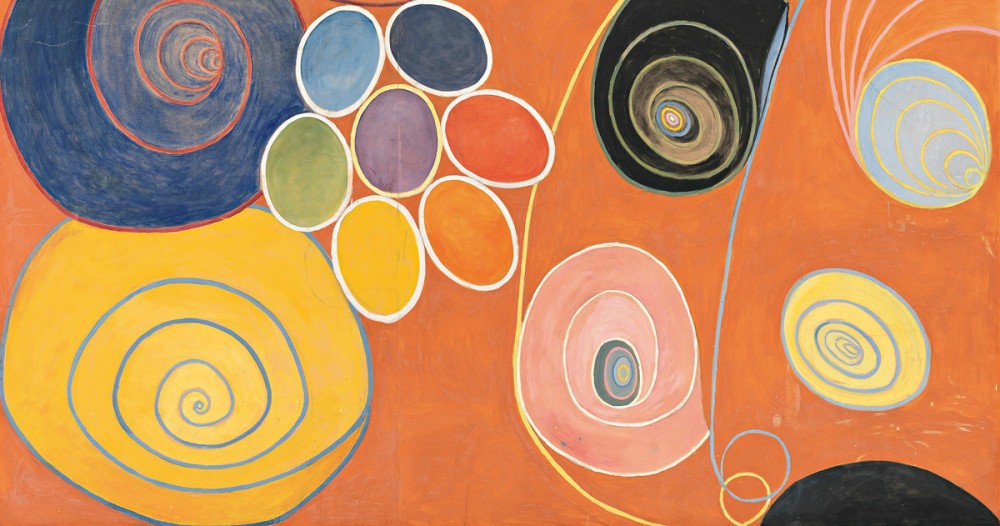Hilma af Klint’s new ways of seeing
Years before Kandinsky, a Swedish woman created magnificent abstract paintings.

In the lone art history class I took in college, I learned that in 1910 the Russian painter Wassily Kandinsky made the first abstract painting. His untitled watercolor reminded me of the world revealed when a drop of pond water is put under a microscope—a world of forms in motion.
But years before Kandinsky, another artist was creating abstract paintings that illuminated hidden realities: Swedish painter Hilma af Klint, who recently had a major exhibition at the Guggenheim Museum in New York called Paintings for the Future. When I visited on a cold day in January, the line of people waiting to see af Klint’s work stretched out of the museum, around the corner, and down the block. Inside, a great crowd of people slowly wound their way past her monumental series of large paintings reflecting on the journey from childhood to old age, her altarpieces for altars not yet made, and her diagrammatic images that investigate color and form with such precision and intensity that they seem to point beyond color and form to something further out.
Or maybe to something further in. The exhibition included two paintings of ring-encircled globes with something tiny at the center. If you could get close enough, you could see them: two tiny angels standing together, face to face, at the core of the world.




